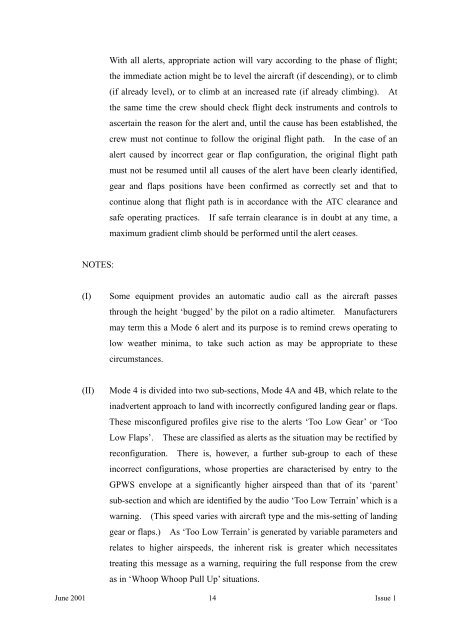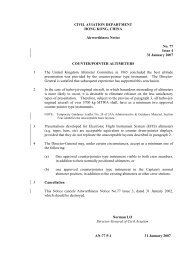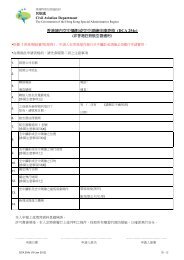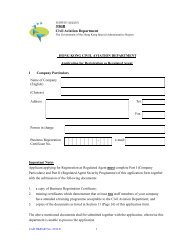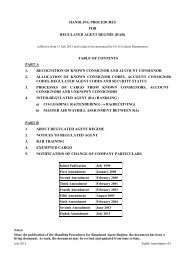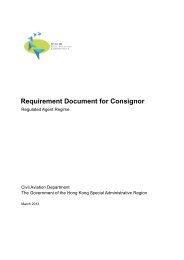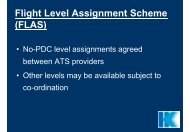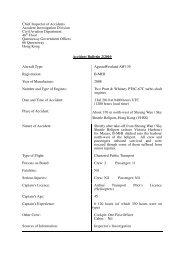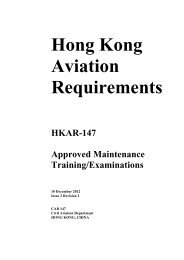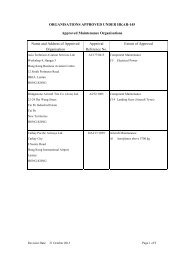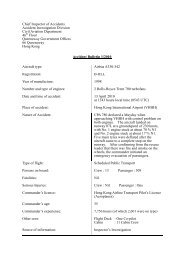CAD 516 Ground Proximity Warning System
CAD 516 Ground Proximity Warning System
CAD 516 Ground Proximity Warning System
Create successful ePaper yourself
Turn your PDF publications into a flip-book with our unique Google optimized e-Paper software.
With all alerts, appropriate action will vary according to the phase of flight;<br />
the immediate action might be to level the aircraft (if descending), or to climb<br />
(if already level), or to climb at an increased rate (if already climbing). At<br />
the same time the crew should check flight deck instruments and controls to<br />
ascertain the reason for the alert and, until the cause has been established, the<br />
crew must not continue to follow the original flight path. In the case of an<br />
alert caused by incorrect gear or flap configuration, the original flight path<br />
must not be resumed until all causes of the alert have been clearly identified,<br />
gear and flaps positions have been confirmed as correctly set and that to<br />
continue along that flight path is in accordance with the ATC clearance and<br />
safe operating practices. If safe terrain clearance is in doubt at any time, a<br />
maximum gradient climb should be performed until the alert ceases.<br />
NOTES:<br />
(I)<br />
Some equipment provides an automatic audio call as the aircraft passes<br />
through the height ‘bugged’ by the pilot on a radio altimeter. Manufacturers<br />
may term this a Mode 6 alert and its purpose is to remind crews operating to<br />
low weather minima, to take such action as may be appropriate to these<br />
circumstances.<br />
(II)<br />
Mode 4 is divided into two sub-sections, Mode 4A and 4B, which relate to the<br />
inadvertent approach to land with incorrectly configured landing gear or flaps.<br />
These misconfigured profiles give rise to the alerts ‘Too Low Gear’ or ‘Too<br />
Low Flaps’. These are classified as alerts as the situation may be rectified by<br />
reconfiguration. There is, however, a further sub-group to each of these<br />
incorrect configurations, whose properties are characterised by entry to the<br />
GPWS envelope at a significantly higher airspeed than that of its ‘parent’<br />
sub-section and which are identified by the audio ‘Too Low Terrain’ which is a<br />
warning. (This speed varies with aircraft type and the mis-setting of landing<br />
gear or flaps.) As ‘Too Low Terrain’ is generated by variable parameters and<br />
relates to higher airspeeds, the inherent risk is greater which necessitates<br />
treating this message as a warning, requiring the full response from the crew<br />
as in ‘Whoop Whoop Pull Up’ situations.<br />
June 2001 14 Issue 1


